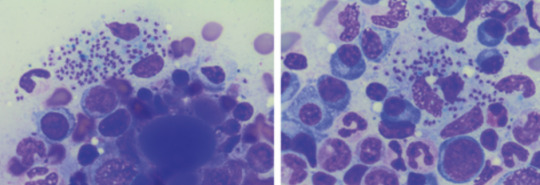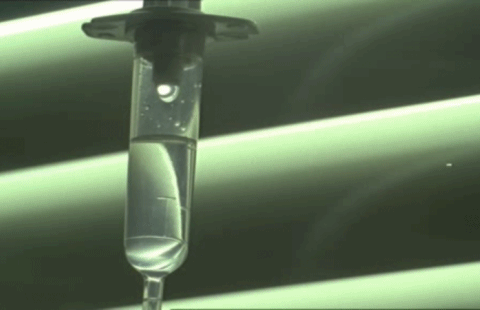#chronic kidney disease stage 2
Explore tagged Tumblr posts
Text
I am FINALLY not a vampire anymore!
After a year of treating a severe vitamin D deficiency (the “how are you not having serious problems?” kind. The “Minimum safe number is 30 ng/mL and you’re at 10.” kind), I’m officially in the good range! That means I get to take the regular strength supplements instead of the nuclear level!
Kidneys are hanging stable, a little slow but doing their job good enough to keep me at stage 2. I still need to increase my phosphorus to a healthy level, but it’s slowly coming up. But still banned from ibuprofen. Boo.
0 notes
Text
Let’s Get to the Bottom of This
You may have heard the expression, “It’s all in your head.” Today, we’re going there and in the other direction: your feet. More specifically, today’s blog is about your feet, neuropathy, and podiatry. You all know I had pancreatic cancer and chemotherapy helped me survive. Here’s a shocker: chemotherapy is poison. As such, it does damage to different parts of your body in addition to reducing or…

View On WordPress
#SlowItDownCKD 2011#SlowItDownCKD 2012#SlowItDownCKD 2013#SlowItDownCKD 2014#SlowItDownCKD 2015#SlowItDownCKD 2016#SlowItDownCKD 2017#SlowItDownCKD 2018#SlowItDownCKD 2019#SlowItDownCKD 2020#SlowItDownCKD 2021#SlowItDownCKD 2022#SlowItDownCKD 2023#SlowItDownCKD podcasts#What Is It and How Did I Get It? Early Stage Chronic Kidney Disease#The Book of Blogs: Moderate Stage Chronic Kidney Disease#Part 1#Part 2
0 notes
Text
Hello. I’m sorry for begging again but my situation is pretty dire.
Recently, I’ve been diagnosed with chronic kidney disease, stage 4. It came out of nowhere and was caught by sheer luck on an unrelated test. Stage four means my kidneys are shriveled up and almost dead - currently at only 17% working condition. When it drops to 10%, which is stage 5 (prognosis is within a year) I will require a kidney transplant and/or dialysis. You can not live without it, and prognosis for dialysis/kidney transplant patients are 10 to 20 years. I’m very young and I really would like to continue having a peaceful life and work on my art. I’ve had many hardships before - I’ve fundraised to get money for rent because of a homophobic attack I’ve suffered, I’ve fundraised to escape my country, all within 2-3 years. I’m really grateful for all the help I’ve gotten and I believe in people’s kindness.
Please, if you’re able, share or pitch in to my gfm campaign made by my fiancé. Link in the reblog.
My comms are also still open if you’d like to help in that way and get some art.

7K notes
·
View notes
Text
"For the first time, genetically modified pig kidneys provided “life-sustaining kidney function” during the course of a planned seven-day clinical study—a first step in addressing the critical crisis worldwide of kidney donor organ shortage.
The University of Alabama’s pre-clinical human study at Birmingham also advances the science and promise of xenotransplantation as a therapy to potentially cure end-stage kidney disease—just as a human-to-human transplants can.
“It has been truly extraordinary to see the first-ever preclinical demonstration that appropriately modified pig kidneys can provide normal, life-sustaining kidney function in a human safely and be achieved using a standard immunosuppression regimen,” said UAB transplant surgeon scientist Jayme Locke, M.D., director of UAB’s Comprehensive Transplant Institute and lead author of the paper...
The peer-reviewed findings published last month in JAMA Surgery describes the pioneering pre-clinical human research performed on a recipient experiencing brain death...
The pre-clinical human brain death model developed at UAB can evaluate the safety and feasibility of pig-to-human kidney xenografts, or transplants, without risk to a living human. It is named for transplant pioneer Jim Parsons, an organ donor whose family generously donated his body to advance xenotransplant kidney research, like the latest patient did.
A Critical Need
Kidney disease kills more people each year than breast or prostate cancer, while more than 90,000 people are on the transplant waiting list. More than 800,000 Americans are living with kidney failure and 240 Americans on dialysis die every day. The wait for a deceased donor kidney can be as long as five to 10 years, and almost 5,000 people per year die waiting for a kidney transplant.
Groundbreaking Study Details
The 52-year-old study subject for this research lived with hypertension and stage 2 chronic kidney disease, which affects more than one in seven U.S. adults, or an estimated 37 million Americans. As part of this study, the subject had both of his native kidneys removed and dialysis stopped, followed by a crossmatch-compatible xenotransplant with two 10 gene-edited pig kidneys, or UKidney.
The transplanted pig kidneys made urine within four minutes of re-perfusion and produced more than 37 liters of urine in the first 24 hours. The pig kidneys continued to function as they would in a living human for the entirety of the seven-day study. Also, the kidneys were still viable at the time the study was concluded.
“In the first 24 hours these kidneys made over 37 liters of urine,” said Dr. Locke. “It was really a remarkable thing to see.” ...
Gene editing in pigs to reduce immune rejection has made organ transplants from pigs to humans possible. The natural lifespan of a pig is 30 years, they are easily bred, and they have organs of similar size to humans. Genetically modified pig kidneys have been extensively tested in non-human primates, and the addition of UAB’s preclinical human research model—the Parsons Model—now provides important information about the safety and efficacy of kidneys in human transplant recipients."
-via Good News Network, September 17, 2023
#organ donation#organ donor#organ transplant#medical news#medical research#pigs#kidney transplant#kidney diseases#dialysis#good news#hope#hope posting#human biology
569 notes
·
View notes
Text
Let's Talk ESRD and Dialysis
Have you thanked your kidneys today? Do you feel grateful when you pee? How about when you eat a little too much potassium or drink a little too much water, do you really enjoy feeling confident that your kidneys will just dispose of the excess?
If so, you probably know the alternative.

About 10% of the world's population has a condition called Chronic Kidney Disease, or CKD. About 2 million of those people are in End Stage Renal Disease (ESRD) and require dialysis or a kidney transplant to live.
Your kidneys are amazing things. They are two organs that sit outside of the sac that hold the rest of the abdominal organs, called the peritoneum. They take in blood from the body, determine the levels of electrolytes, water, and waste products in that blood, and remove the waste products and excess electrolytes and water.
They also have secondary tasks. They monitor the amount of red blood cells in your blood and send out hormones that entice the bone marrow to make more when we're low. They also monitor blood pressure and release hormones that raise that blood pressure when it gets low.
Lots of things can hurt the kidneys. For example, poorly controlled high blood pressure and poorly controlled diabetes are among the top reasons why kidneys fail. Additionally, being dehydrated while engaging in strenuous exercise or taking medications like ibuprofen or naproxen (any NSAIDs) can cause kidney damage.
We measure how well the kidneys are working via the Glomerular Filtration Rate, or GFR. This is a measure of (essentially) how much blood in milliliters the kidneys filter per minute. 90 or higher is normal, while a GFR of 15 or lower is considered ESRD.
So let's say someone has a GFR of less than 15 and the decision is made to start them on dialysis and put them on the kidney transplant list. What options do they have?
Well, they need to figure out if they want to do hemodialysis or peritoneal dialysis.
In hemodialysis, the patient is hooked up to a machine that runs their blood across a special membrane. On the other side of the membrane, a solution called dialysate draws excess water, electrolytes, and waste products from the blood. Hemodialysis is usually done at a dialysis center for 3-5 hours, 3 times per week.

Hemodialysis is better for patients who have either failed home peritoneal dialysis or can't or aren't comfortable with doing the technical part of the job by themself at home. There is also a social component, where dialysis is a chance to meet and interact with other people who are going through the same things they are.
People who undergo hemodialysis have to have some kind of "access", or a way for the blood to come out of their body, go through a machine, and go back into their body. For some people, this is a dialysis catheter that is inserted into the person's chest and looks like this:

It can also be a fistula. A fistula is the surgical connection between a vein and an artery in the arm or leg. Over time, this connection becomes large and rubbery, and each time dialysis is done, two needles (one to remove blood, and one to return it) are placed in the fistula. A fistula often looks like this:

In peritoneal dialysis, the patient instills the dialysate directly into the sac that holds their abdominal organs. The sac itself acts as the membrane, and dialysate draws the electrolytes, water, and waste directly through the sac wall. They then wait a certain number of hours, and drain the dialysate. This can be done manually by the patient during the day, or at night while the patient sleeps with a machine called an automatic cycler. Usually peritoneal dialysis is done every day, with 2-4 cycles of 4 hours per cycle.
People using peritoneal dialysis also need a form of access, but instead of it being to their blood stream, it is to their peritoneum. Here's what that looks like:

The catheter is placed surgically into the peritoneum, and stays there all the time, even in between dialysis sessions.
Someone using peritoneal dialysis has to be very careful when they are accessing their dialysis catheter. This is because the biggest problem with peritoneal dialysis is the risk of a life threatening infection called peritonitis. Someone who gets peritonitis too many times may need to switch to hemodialysis.
Here is what a manual exchange looks ilke:
youtube
Someone may choose to do peritoneal dialysis over hemodialysis because it affords more freedom to keep a job or do daily tasks like keeping house. People who do PD also don't have to find rides to the dialysis center. However, they do have to take on more of the responsibility for making sure they do treatments correctly and be able to keep accurate records of the treatments they give themselves. Peritoneal dialysis also tends to be less taxing on the body, and have fewer side effects than hemodialysis when done correctly.
34 notes
·
View notes
Text


Autopsy Report
Case Number: 2024-1125-01 Decedent Name: Chad Evanston Age: 19 Sex: Male Height: 5’11” Weight: 154 lbs (estimated lean build) Race/Ethnicity: Caucasian Date of Death: November 24, 2024 Time of Autopsy: November 25, 2024, 9:00 AM Pathologist: Dr. Robert Linfield
I. External Examination
General Appearance: The decedent is a well-developed, lean, and athletic-appearing 19-year-old male, weighing approximately 154 pounds. He has brown hair, approximately 3 inches in length, and brown eyes. Skin is pale but otherwise unremarkable, with no evidence of external trauma or defensive injuries. Fingernails are clean and well-trimmed.
Clothing: The decedent was found dressed in athletic attire, including a blue baseball cap, black athletic shorts, a running watch on the left wrist, and well-worn running shoes. The clothing was damp due to environmental exposure but showed no tears or stains of significance beyond expected post-mortem findings.
Identifying Marks: A faint scar measuring 2 cm is present on the left knee, consistent with prior minor trauma or surgery. No tattoos or other distinguishing marks.
II. Internal Examination
Cardiovascular System: The heart is notably abnormal upon inspection. Weighing 390 grams (upper end of normal for the decedent's size and build), the heart exhibits significant thickening of the left ventricle (left ventricular hypertrophy). The mitral valve shows marked structural abnormalities, including:
Fibrotic thickening of the leaflets.
Mild calcification at the annulus.
Evidence of prolapse of the posterior leaflet, causing incomplete coaptation during closure. This structural defect resulted in significant mitral regurgitation, which would have led to reduced cardiac efficiency during exertion.
Examination of the coronary arteries reveals no signs of atherosclerosis or narrowing. However, microscopic examination identifies mild interstitial fibrosis in the ventricular myocardium, particularly in the left ventricle. These findings are consistent with chronic strain and early-stage cardiomyopathy, likely exacerbated by prolonged high-intensity physical activity.The conduction system shows mild scarring near the sinoatrial node, likely the origin of the arrhythmias detected on the decedent's running watch.
Lungs: The lungs weigh 520 grams (right) and 480 grams (left), with mild congestion. Examination shows no emboli or aspirated material.
Abdominal Organs: All abdominal organs, including the liver, spleen, kidneys, and gastrointestinal tract, appear normal in size and morphology.
Brain: Examination of the brain reveals no hemorrhages, infarcts, or structural abnormalities.
III. Microscopic Findings
Heart Tissue: Histological examination of the heart confirms chronic myocardial fibrosis and focal areas of myocyte disarray. These findings are indicative of longstanding structural abnormalities and stress-induced cardiac remodeling.
Lung Tissue: Pulmonary alveoli appear congested but otherwise unremarkable.
Valvular Tissue: Fibrosis and calcification of the mitral valve tissue are evident, along with cellular degeneration, consistent with a congenital or acquired valvular defect exacerbated over time.
IV. Toxicology Report
Testing for substances, including recreational drugs, alcohol, and common stimulants, returned negative results.
V. Cause of Death
Sudden cardiac arrest secondary to severe mitral valve dysfunction and associated arrhythmia.
Detailed Analysis of Cardiac Findings
The decedent's heart exhibited chronic and progressive mitral valve disease. The fibrotic and calcified changes in the mitral valve likely originated from an undiagnosed congenital defect, aggravated over time by physical exertion. The incomplete closure of the mitral valve resulted in backflow of blood (regurgitation) during systole, progressively overloading the left atrium and left ventricle. Over time, this stress led to the observed hypertrophy and scarring of the myocardium.
The combination of myocardial fibrosis and conduction system scarring predisposed the decedent to severe arrhythmias. The running watch data corroborates this, showing prolonged arrhythmic episodes throughout the decedent's final run.
The sustained stress of a nine-mile run caused the decedent’s heart to become electrically unstable, leading to ventricular fibrillation—a fatal arrhythmia resulting in sudden cardiac arrest. The autopsy findings, supported by wearable device data, confirm that this event was precipitated by his preexisting cardiac abnormalities.
Despite being otherwise healthy and athletic, the decedent’s heart was structurally compromised, making high-intensity exercise particularly dangerous. The mitral valve's dysfunction was significant enough that even mild to moderate exertion may have posed a risk over time.
Conclusion: Chad Evanston’s death was due to undiagnosed and progressive cardiac pathology exacerbated by prolonged physical exertion. This case highlights the critical need for screening individuals engaging in high-intensity activities for underlying heart conditions.
Final Manner of Death: Natural
21 notes
·
View notes
Text
I didn't understand what people meant when they said that the patients where I've done medical school and am doing residency are "very sick," and I'm starting to realize that this is because I haven't actually had context for practicing medicine in a location where patients are less sick, and it is not in fact all that average to think, "It's a good day when I have a patient with a functioning liver and kidneys!" or be pleasantly surprised when I don't have to list "type 2 diabetes mellitis, hypertension, hyperlipidemia, chronic kidney disease stage X, heart failure (of some sort)" on the chart's problem list just, like, at default baseline, with a side of chronic opioid use and/or intravenous drug abuse.
On the other hand, those same people were correct: it's making me better at treating all of those things and handling comorbidities really quick!
One of the big things I keep running into is pain management, because three common things for me to see are liver disease and kidney failure. To simplify it a lot, liver disease precludes the use of acetamniphen/Tylenol, and kidney failure precludes the use of ibuprofen/NSAIDs. There are other pain treatment medications, but I have less experience with them, and they tend to either be for more specific/adjuvant uses (like lidocaine, the gabas, antidepressants, steroids) or opioids... and I've literally seen two patients in the past week who had to get Narcan for opioid overuse.
On the other hand, obviously people in the hospital often have very legitimate reasons to be in pain and we don't want to leave them that way. But it's a hard line to walk when the family is asking questions like "Why is dad not getting enough pain medication?" and "Why is dad talking to the walls about his days in the war?" or when you get people pulling shenanigans like, "I'm allergic to Tylenol, give me Norco instead!" (Hint: Look up what the main ingredient in Norco is.)
Thank you, on-call pharmacy. :'))))
Another thing I'm quickly becoming relieved about is patients who are...not jerks, I guess? It feels not great to put it that way because generally being in the hospital is an extremely poor time for anyone, but also, it sucks when a solid 1/3 of my patients are actively ornery to everyone who tries to work with them for whatever reason (altered mental status, depression, being in pain, general anger issues, drug withdrawal). Shoutout to the folks actively working together with me to help them get better.
Anyway, the hospital is very tiring. Surely the emergency department I'm going to next will - nah, I can't even pretend to finish that joke.
YOLO! I am really enjoying how much and how quickly I'm learning! Despite the crazy hours this is definitely a drastic improvement on medical school in terms of actually enjoying the work.
#personal#dear diary#residency#I had a stroke rule-out I discharged yesterday who literally just had the one first-time TIA and was also hypothyroid#and those were his ONLY medical conditions#I was like “???? I feel like this chart is too short...”#we're gonna get a more in-depth pain management presentation from our clinic's PharmD in didactics soon#which I specifically asked her for#so I am looking forward to it!
42 notes
·
View notes
Note
delete this please I have depression, anxiety, panic, post traumatic stress disorder, psychosis, high blood pressure, low blood pressure, hpv, hiv, dengue, zika, chikungunya, black plague, polio, infantile paralysis, osteoporosis, swine flu, yellow fever, meningitis, meningitis b, gonorrhea, herpes, pharyngitis , Chagas disease, bronchitis, leptospirosis, cancer, measles, chickenpox, smallpox, mumps, gastritis, tetanus, hepatitis, conjunctivitis, stroke, whooping cough, labyrinthitis, scabies, leukemia, rabies, cirrhosis, scoliosis, microcephaly, anencephaly, ebola, ingrown toenail, autism, asperger's syndrome, arrhythmia, pneumonia, diabetes(type 1 and 2), heart failure, petho envy, dwarfism, gigantism, down syndrome, asthma, liver cancer, esophageal cancer, brain cancer, stomach cancer, skin cancer , leprosy, homosexuality, herniated disc, thrombosis, elephantiasis, passion fruit heel, phimosis, prostate cancer, testicular cancer, parkinson's disease, headache, malformation of the ovaries, lymphoma, lead poisoning, severe allergies, endometriosis, stomach ulcers, irritable bowel syndrome, appendicitis, chronic migraines, graves disease, blindness, deafness, stage 4 kidney disease, organ failure, 90% stage 3 burn, urinary tract infection, cervical cancer, uterine tuberculosis, uterine fibroids, uterine prolapse, anal prolapse, hemorrhoids, dermatillomania, coronavirus, contact dermatitis, eczema, athletes foot, fungal infection, bacterial infection, and veganism
Have you tried yoga.
11 notes
·
View notes
Text


hi everyone, i'm in need of some help. i hate asking others for anything, but this is different. as it concerns my babygirl of 13 years, apple. this cat has been with me thru everything. my parent's divorce, horrendous bullying throughout junior high, a couple breakups, a svicide attempt, loss, and much more. she is my rock and i wouldn't be here today without her. she got diagnosed with "kidney failure" by a vet on friday, and they swarmed my boyfriend in the clinic and urged us to put her down. that she wouldn't make it a week. i wanted some more time with her, so i took her home that day. when we got home, i started to panic because i was scared she was suffering, and got my boyfriend to contact his family vet to put her down that same day instead. to spare her from suffering. however, as we were in the patient room, about to sedate her to put her down, the doctor came in and looked at the bloodwork we received from the other vet. he immediately stopped the euthanasia-procedure and explained to me that she was not in kidney failure. that she was about in stage 2 of chronic kidney disease, and that she did not need to be put down. apparently some vets refuse to help cats with CKD and insist that there is no hope and that they should be put down upon diagnosis. but he didn't want to do that. so now here we are, she's back home with me and being just-about her usual self. however, CKD is common in senior cats and apple has it. it cannot be cured, and it is terminal, but cats with CKD can live happy, normal lives if they are given treatment and special care. (i've done lots of reading since thursday-friday.) of course though, vet bills and special food for apple is going to be expensive. so i would like to ask, if you can afford to commission me, or if you would like to donate at all, please check out my ko-fi. it would mean the absolute world to me, my boyfriend, my family, and apple. thank you so very much for reading ♥. please don't feel obligated to do anything, just keep her in your thoughts for me.
#my art#furry art#ko fi support#vet bills#financial help#chronic kidney disease#ckd#cat#cats of tumblr#commissions open
10 notes
·
View notes
Text
CDC recommends everyone ages 75 and older get an RSV vaccine.
CDC recommends adults ages 60–74 who are at increased risk of severe RSV disease get an RSV vaccine.
The RSV vaccine is not currently an annual vaccine. If you have received an RSV vaccine already (including last year), you should not get another RSV vaccine at this time.
You can get one at any time, but the best time to get vaccinated is in late summer and early fall.
Conditions that increase your risk for severe illness include:
Chronic heart or lung disease
Weakened immune system
Certain other medical conditions
Living in a nursing home
To protect infants and some young children, CDC recommends the maternal vaccine (Pfizer’s Abrysvo) for pregnant people during weeks 32–36 of pregnancy, or an RSV monoclonal antibody (nirsevimab) for babies given after birth and for some young children ages 8–19 months.
Adults who get RSV usually have mild or no symptoms. Symptoms are usually consistent with an upper respiratory tract infection, which can include rhinorrhea, pharyngitis, cough, headache, fatigue, and fever. Milder illness in adults typically resolves in 1–2 weeks. However, RSV can also cause severe disease and hospitalization in adults.
RSV can sometimes also lead to exacerbation of serious conditions such as:
Asthma
Chronic obstructive pulmonary disease (COPD)
Heart failure
Epidemiologic evidence indicates that all adults ages 75 or older and adults ages 60–74 with certain risk factors are at increased risk of severe RSV.
Conditions that increase the risk for severe RSV
The following conditions increase the risk of severe RSV:*
Chronic cardiovascular disease (e.g., heart failure, coronary artery disease, or congenital heart disease [excluding isolated hypertension])
Chronic lung or respiratory disease (e.g., chronic obstructive pulmonary disease, emphysema, asthma, interstitial lung disease, or cystic fibrosis)
End-stage renal disease or dependence on hemodialysis or other renal replacement therapy
Diabetes mellitus complicated by chronic kidney disease, neuropathy, retinopathy, or other end-organ damage, or requiring treatment with insulin or sodium-glucose cotransporter-2 (SGLT2) inhibitor
Neurologic or neuromuscular conditions causing impaired airway clearance or respiratory muscle weakness (e.g., poststroke dysphagia, amyotrophic lateral sclerosis, or muscular dystrophy [excluding history of stroke without impaired airway clearance])
Chronic liver disease (e.g., cirrhosis)
Chronic hematologic conditions (e.g., sickle cell disease or thalassemia)
Severe obesity (body mass index ≥40 kg/m2)
Moderate or severe immune compromise†
Residence in a nursing home
Other chronic medical conditions or risk factors that a health care provider determines would increase the risk for severe disease due to viral respiratory infection (e.g., frailty,§ situations in which health care providers have concern for presence of undiagnosed chronic medical conditions, or residence in a remote or rural community where transportation of patients with severe RSV disease for escalation of medical care is challenging¶)
Source
2 notes
·
View notes
Text
Leishmaniasis
Case Reports, like we're on a episode of house

23M in Kenya, presenting with months of LOW, persistent fevers, and abdo fullness, found to have massive splenomegaly.
examination: massive splenomegaly (10 cm below costophrenic margin, and will definitely cross midline) and hepatomegaly
pancytopaenic on bloods, plt's down to 40s
diagnosis confirmed on BMAT (parasite seen)
normal HIV, liver and kidney function
Bodies seen on the BMAT below are part of the lifecycle of the parasite that is intracellular, hence you can see the macrophages/neutrophils loaded with them, even bursting

What is it:
think of it when you get a patient with pancytopaenia and hepatosplenomegaly, who either traveled to or is in/from a tropical/subtropic region (where sand flies are)
cause - protozoa parasite Leishmania, transmitted by infected sandflies
Epidemio (when to consider it)
tropics, subtropics (South America, Asia, AFrica), Southern Europe
Microbiology/Transmission
parasite, replicates intracellularly (Leishmania donovani)
transmitted in sand flies (can be unnoticeable and usually bite in dawn or dusk - evenings or night), can also be transmitted via needles/blood
more common in rural areas
I've simplified this, but is more extensively covered in StatPearls and Wiki (there's different species of Leish and sandflies that transmit it)
once bitten, the protozoa are phagocystosed by skin macrophages, which then becomes full of the "bodies" (part of the lifecycle). Eventually these burst to release more of the bodies that infect more macrophages
they eventually are spread via blood to liver/spleen/BM and LNs
Random history:
ancient, records of disease date back to Egyptian mummies from 3000 BC --> positive DNA amplication for Leishmania and on papyrus from 1500 BC

multiple physicians from different times have described the disease, but it's named for 2 who described the parasite's intracellular ovoid body stage in smears from infected patients in India: Lt General William Boog Leishman and Captain Charles Donovan (Ronald Ross named the bodies after the 2 --> "Leishman Donovan bodies"
significant disease in Allied troops in Sicily in WWII, called "jericho buttons" (image on wiki from a WWI trooper serving in the middle east)

Leishman: Scottish pathologist and British Army medical officer, later it's director general in the 20s, did extensive research into the parasite named for him by Sir Ronald Ross. He mistook the parasite he observed for trypanosomes (cause of Chagas in South America and African sleeping sickness in Africa)
Donovan: Irish parasitologist, medical officer in India, observed an epidemic across India just after the rebellion of 1857, discovered the "bodies" in spleen tissue as the causative agent for what the locals called "kala azar" (severe visceral leishmaniasis - see below)
Donovan also discovered the "bodies" of Klebsiella granulomatis, hence these too are named after him (cause of ulcerative granulomas)
It became scandalous as both wanted credit for the "discovery" of this newly identified organism. So Sir Ronald Ross named it for both of them.
Sir Ron, by the way, won a Nobel in Medicine for discovering that malaria is transmitted via mossies (this was also a source of scandal, he was meant to share it with another physician who he accused of fraud - and they never received the award)
finally, it was actually a Russian physician who identified it first, but well, he published in a little known Russian journal which was promptly forgotten.
Clinical features
cutaneous type vs visceral organ type (spleen, liver, bones)
From wiki

can be asymptomatic
cutnaeous: can be there for years and resemble leprosy, causes an open chronic wound (most common), incubation 2-4 weeks on average (nodules at site of inoculation that eventually form ulcers), can heal spontaneously in 2-5 yrs
in diffuse cutaneous cases, can affect face, ears, extensor surfaces
can be muscosal = eg nasal symptoms/epistaxis, severe: perforated septum, this occurs in 1/3 after resolution of cutaenous symptoms (can be severe/lifte threatning, as it can affect vocal cords and cartilage, but oddly not bone)
visceral (incubation periods of up to years until immuncompromise): fever, weight loss, hepatosplenomegaly (spleen more than liver), pancytoaepnia, high total protein and low albumin with hypergammaglobulinaemia
this has seasonal peaks related to sandfly habits and humidity
interestingly it is an infective cause of massive splenomegaly, such that it crosses the midline
Extreme - but noticeable hepatosplenomgealy/abdo fullness, from medscape

can be atypical in HIV co infected patients, LAD in seom regions like Africa
Kala azar = black fever in some severe cases (fatal due to secondary mycobacterial infection or bleeding), refers to damage fto spleen, liver and anaemia
invstigations:
serology not great (minimal humoral response to the parasite), so often requires histopath (tissue sample) for which BMAT is safest in visceral organ involvement
visualisation of amastigotes (or Leishman-Donovan bodies), as intracellular --> can be seen in macrophages (small round bodies) post Giemsa staining
PCR of DNA also possible (as done in the Egyptian mummies)
Image source:

Treatment

liposomal amphotericin B (holy shit strong stuff) in visceral, PO: miltefosine (caution in pregnancy), all have significant ADRs, or paromycin. however, mortality of 10% if visceral left untreated
mixed results with azoles
in HIV co infection - start the HAARTs! can improve survival, mortality is 30% in HIV patients
cutaneous: stibolgluconate (have never heard of these drugs) and megluaine antimoniate, but limited disease often spotnaeously gets cleared by the innate system
prevention:
use DEET insect repellant at dawn and dusk
loose fitting clothing that covers all skin
no vaccine (were attempts at vaccinating dogs, which decreased rates)
sandflies are smaller than mossies, so requires small netting

Differentials for hepatosplenomegaly

Sources:
WHO guidelines
CDC guidlelines
Wiki - Haven't covered pathophysio, but wiki does extensively
StatPearls
DermNet - great resource for all things derm, that my derm colleagues pointed out to me
9 notes
·
View notes
Text
//For those curious of our absence
Was homeless twice (last time was 2 years ago), couldn't hold down a job or stable life because of psychosis and health issues.
BUT now I'm in a cheap place again that I've always felt like it was home, I'm a nurse aid now working a lot of overtime to finally start paying off what I owe, started Geodon and able to stay on it. No longer in a toxic rut due to psychosis basically, been pretty stable.
HOWEVER I have been diagnosed with stage 3 chronic kidney disease (which is SO funny considering), and fibromyalgia. But Jack is back and I'm so grateful we're welcomed back so warmly 🫂 🤗
I won't talk about myself much since this is Jack's space, but my main is @enki-ankarian if you wanna study me in a petri dish
8 notes
·
View notes
Text
Hot! Hot! Hot!
If you’re tired of reading about climate change, better rethink that opinion. You have chronic kidney disease. Climate change affects CKD. I live in Arizona. Our temperatures the last week or so have gone up as far as 117 degrees. I haven’t seen my backyard in weeks. It’s just too hot to go out. I wanted some kind of scientific definition of climate change that I could understand so I turned to…
#SlowItDownCKD 2011#SlowItDownCKD 2012#SlowItDownCKD 2013#SlowItDownCKD 2014#SlowItDownCKD 2015#SlowItDownCKD 2016#SlowItDownCKD 2017#SlowItDownCKD 2018#SlowItDownCKD 2019#SlowItDownCKD 2020#SlowItDownCKD 2021#SlowItDownCKD 2022#SlowItDownCKD 2023#SlowItDownCKD podcasts#What Is It and How Did I Get It? Early Stage Chronic Kidney Disease#The Book of Blogs: Moderate Stage Chronic Kidney Disease#Part 1#Part 2
0 notes
Text
the mystery of the boone PeePee continues (and boy am i getting tired of doctors telling me "i've never seen this before")
boone's culture came back with a very definitive "clear" from the lab, so given that we've now ruled out a UTI i brought him in for an abdominal ultrasound to take a closer look at his kidneys and check for abnormalities. the ultrasound showed two very important things:
1- both kidneys have deterioration consistent with chronic kidney disease - between this and his lab values, he's at about a stage 2 out of 4. this is still really early and in theory should be easily controllable with the rx diet for quite a while. good!
2- his right kidney and the surrounding fat and tissues are inflamed and dilated. this virtually always means there's a kidney infection. easy fix! except.... we just got a urine culture back that says there is no infection. not only that, but they sent it back early - as in, the lab was so 100% confident in not finding a single shred of bacteria that they called their shot before the full waiting period was up. both the radiologist and GP were perplexed by this, as there's not really anything else that causes these type of symptoms/findings except for the one thing we're being told very clearly it is not. hm.
given that, they want to try boone on a 2-week course of a heavy-duty antibiotic anyway and then do another ultrasound after and see what happens - if the swelling and/or symptoms are better, it's possible it was just the world's most sneaky kidney infection and should be fixable. if not, well, probably time to bring in an internist and get their thoughts. i have very low confidence that boone will tolerate this antibiotic as he has a super sensitive stomach when it comes to medications, but it's worth a try.
as with all of his other health problems, the doctors' consensus seems to be "this is a really weird presentation but i thiiink it's this thing?" which, hey, at least he's consistent.

50 notes
·
View notes
Text
Here's something that I doubt everyone knows about the disability crisis in the United States. For a civilian to get disability payments, they have to be "totally" disabled; in other words, you have to prove you cannot get any job in any industry based on Department of Labor statistics in your state, not *just* that you have a debilitating condition. For a veteran to get disability payments, they have to prove a percentage of how disabled they are, and getting 100% disability as a veteran is no easy task wording is critical in the documentation if anyone at any point in your medical history intentionally or not downplays your disability you will get percentage points taken off how much pay you get as a disabled veteran. This is particularly difficult for people with any pride or dignity left because, in both civilian and veteran cases, you must explain just how awful it is in explicit terms and quantifiable, dehumanized ways to sate the court's interest, or you will not get "total" disability. Furthermore, until you are considered "permanently" disabled, you must repeat this process every 3-5 years. Yet, again no one anywhere can talk about you improving or you're out (for civilians), or your disability percentage amount is reduced (for veterans.) Also, if you manage to prove a "permanent" disability, you still get checked every seven years to make sure it's still "permanent." Finally, to get your student loans discharged as a civilian, you must prove your disabled status is both "total and permanent," guess what if one of those changes? Those loans come right back. Also, your loans go into forbearance if you're" totally disabled" and not considered "permanent" or "short-term" (more than 2 weeks, up to a year). Yes, that is the one that accrues interest. Not deferment. For short-term disability, you can defer, but if you're long-term, non-permanent, you forbear. Most people on long-term disability are medically permanently disabled but not in the eyes of the law because of their age, even if it is a chronic or progressive disease. This is why people die waiting for total disability, let alone permanent. My disability attorney said straight to my face 10 years ago, "You should get disability because you have a chronic disabling condition in two systems, but it's going to be a fight because you are so young." I was 28, by the way. She said if I had "just Lupus" or "just medication-resistant dysthymia and generalized anxiety," I wouldn't have stood a chance. My cousin "just" had Lupus and was in end-stage renal failure, it took her 3 years to get disability, and by then, she had a kidney transplant. She was in her 20s and on her parents' insurance. I have a friend whose veteran husband couldn't get 100% VA disability because some doctor at some VA clinic years ago had written down "mild back pain" when describing the pain he felt from degenerative disc disease and 2 herniated discs. It took years to get that one note out of his file. No matter what any other doctor said. So when I say you can't comprehend the disability crisis in the United States, I'm talking about this. Thanks for coming to my TED Talk.
18 notes
·
View notes
Text
Understanding Different Types of Diabetes and Their Impact on the Body

Diabetes is a chronic condition that affects millions of people worldwide. It disrupts the body's ability to regulate blood sugar (glucose) levels, leading to serious health complications if not managed properly. There are several types of diabetes, each with unique characteristics and impacts on the body. This article will explore the different types of diabetes, how they affect the body, and the tests provided by RML Pathology to diagnose and manage this condition.
1. Type 1 Diabetes
Description:
Type 1 diabetes is an autoimmune disease where the immune system mistakenly attacks and destroys insulin-producing beta cells in the pancreas. This results in little to no insulin production, which is essential for regulating blood sugar levels.
Impact on the Body:
Requires lifelong insulin therapy.
Increases the risk of complications such as diabetic ketoacidosis (DKA), a potentially life-threatening condition.
Long-term complications include cardiovascular disease, kidney damage (nephropathy), nerve damage (neuropathy), and vision problems (retinopathy).
Can cause frequent urination, excessive thirst, extreme hunger, weight loss, fatigue, and irritability.
2. Type 2 Diabetes
Description:
Type 2 diabetes is the most common form of diabetes. It occurs when the body becomes resistant to insulin or when the pancreas does not produce enough insulin. Lifestyle factors such as obesity, poor diet, and lack of exercise significantly contribute to its development.
Impact on the Body:
Often managed with lifestyle changes, oral medications, and sometimes insulin.
Can lead to complications like heart disease, stroke, kidney disease, eye problems, and nerve damage.
Symptoms include increased thirst, frequent urination, increased hunger, fatigue, blurred vision, slow-healing sores, and frequent infections.
3. Gestational Diabetes
Description:
Gestational diabetes occurs during pregnancy when the body cannot produce enough insulin to meet the increased needs. It usually resolves after childbirth but increases the risk of developing type 2 diabetes later in life.
Impact on the Body:
Can cause high blood pressure during pregnancy (preeclampsia).
Increases the risk of having a large baby, leading to complications during delivery.
May result in low blood sugar levels in the newborn and a higher risk of obesity and type 2 diabetes in the child later in life.
4. Prediabetes
Description:
Prediabetes is a condition where blood sugar levels are higher than normal but not high enough to be classified as type 2 diabetes. It is a critical stage for intervention to prevent the progression to type 2 diabetes.
Impact on the Body:
Often reversible with lifestyle changes such as diet and exercise.
Increases the risk of developing type 2 diabetes, heart disease, and stroke.
Symptoms are often absent or mild, making regular screening important.
Tests Provided by RML Pathology
RML Pathology offers a comprehensive range of tests to diagnose and manage diabetes effectively. These include:
Fasting Blood Glucose Test:
Measures blood sugar levels after fasting for at least 8 hours.
Helps diagnose diabetes and prediabetes.
HbA1c Test:
Provides an average blood sugar level over the past 2-3 months.
Used to diagnose diabetes and monitor long-term glucose control.
Oral Glucose Tolerance Test (OGTT):
Measures the body's response to a glucose solution.
Commonly used to diagnose gestational diabetes.
Random Blood Sugar Test:
Measures blood sugar levels at any time of the day.
Useful for diagnosing diabetes when symptoms are present.
Gestational Diabetes Test:
Specifically designed for pregnant women to detect gestational diabetes.
Conclusion
Understanding the different types of diabetes and their impact on the body is crucial for effective management and prevention. Regular testing and early detection play a vital role in managing diabetes and preventing complications. RML Pathology provides a wide range of diagnostic tests to help you monitor and manage your diabetes effectively. If you have any symptoms or risk factors for diabetes, consider visiting RML Pathology for a comprehensive evaluation.
Contact RML Pathology Today:
📞 7991602001, 7991602002 📞 0522-4034100 🌐 www.rmlpathology.com
Experience the best in diagnostics with RML Pathology – where your health is our priority.
#diabetes#type 1 diabetes#type 2 diabetes#gestational diabetes#prediabetes#diabetes management#blood sugar#glucose levels#RML Pathology#diabetes tests#HbA1c#fasting blood glucose#oral glucose tolerance test#random blood sugar test#health#healthcare#diabetes diagnosis
4 notes
·
View notes